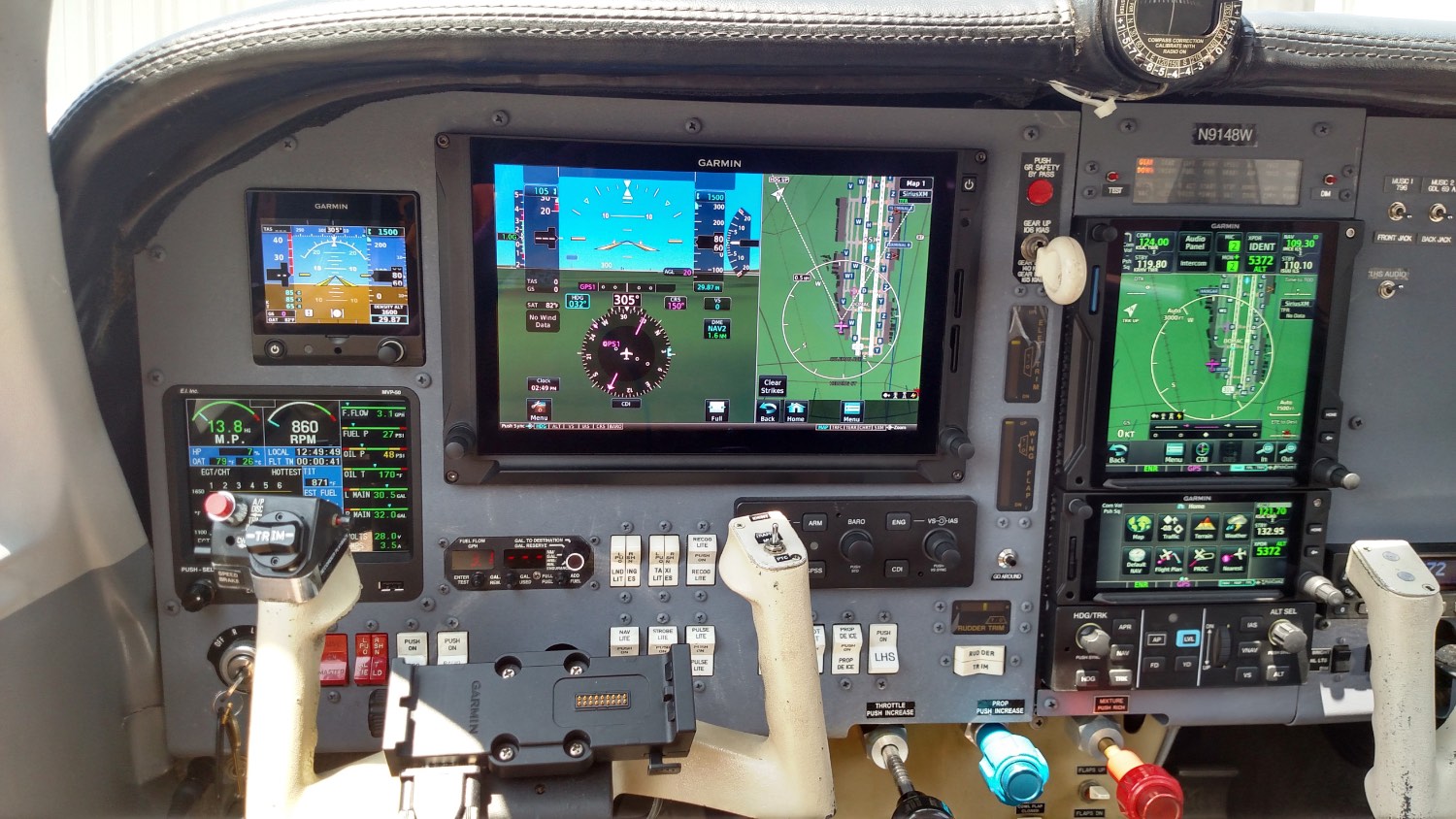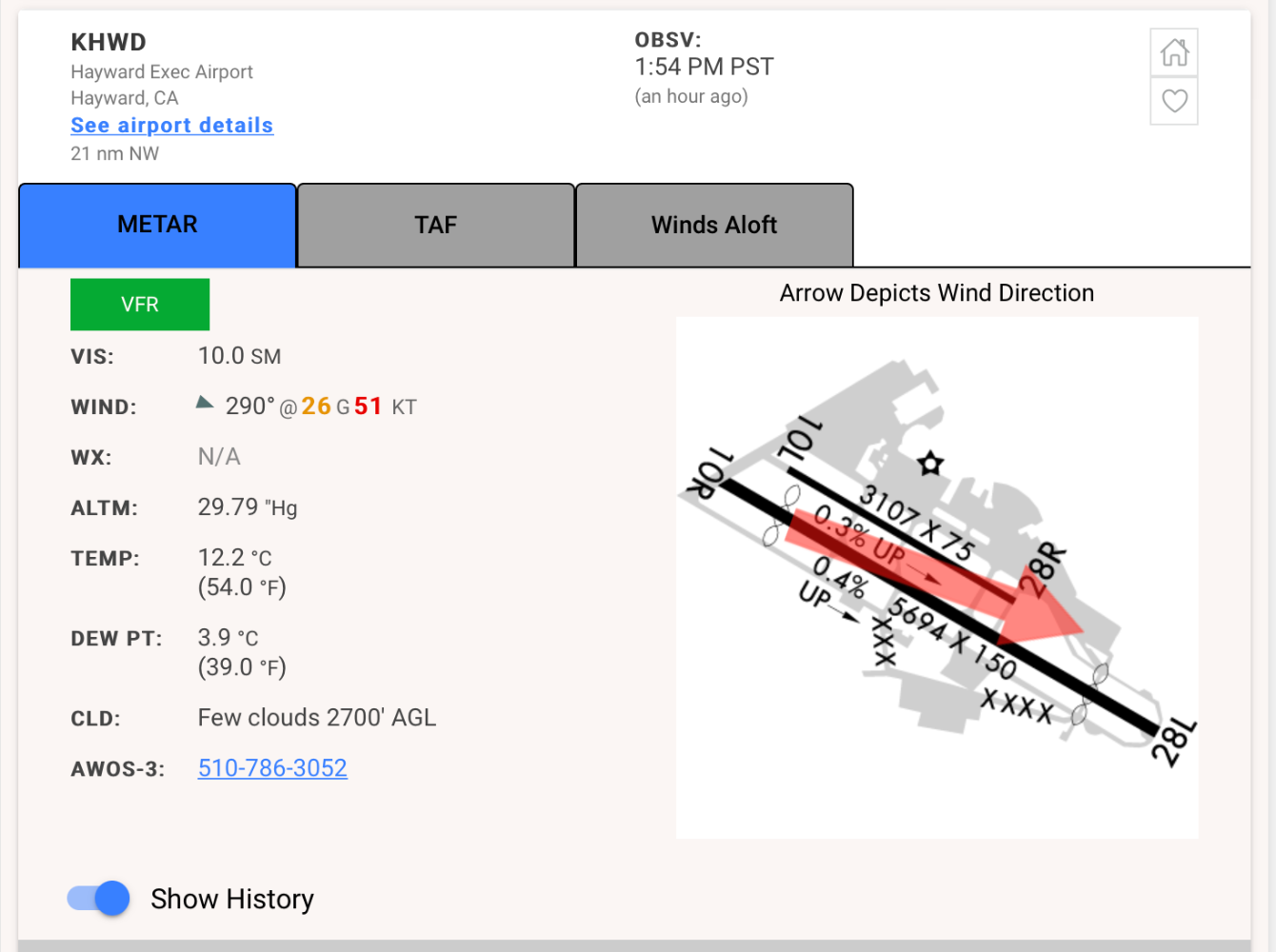-
Posts
2,707 -
Joined
-
Last visited
-
Days Won
37
Content Type
Profiles
Forums
Blogs
Gallery
Downloads
Events
Store
Everything posted by donkaye, MCFI
-

Phased In Upgrade of Avionics M20J
donkaye, MCFI replied to Lax291's topic in Avionics/Panel Discussion
This may seem like heresy, but I think you should borrow the money and do your complete panel upgrade now. Reason? I think at least for the next two years, and maybe even longer, we are going to have inflation hitting us in the face. Once people start accepting the massive price increases, as it seems they have, it becomes a self fulfilling prophesy. I think the cost of borrowed money in the long run would be less than the increased cost of the equipment 4-5 years from now. I think my panel upgrade in today's prices would at least 50% more than it cost me when I did the upgrade years ago. -
Maybe, but because of my confidence in and having viewed their structural integrity during assembly in Kerrville, where I would take a Mooney into turbulence and feel completely comfortable like last week coming out of Hayward with winds 26G51, I wouldn't even consider getting into a Cirrus in those conditions.
-
I would say surpass the functionality of a new airplane with the G1000NXi--which is why I chose the upgrade path I did rather than buy a new airplane. What did I lose? 20 Knots. What did I not lose? $500,000. As nice and fun to fly as the new Ultras are, it's hard to compete with a well maintained older airframe and the best in a new upgraded panel.
-
Robert, I'm going to have to disagree with you. Having flown the G1000 up thru the NXi version, my functionality in a number of regards out performs the NXi. G1000 is old technology. Speaking of "old", the backup instruments in the above picture are old mechanical ones whose lifespan without overhaul is less than the digital equivalent.
-
-
At $100,000 for an engine and $150,000 for avionics, that leaves $250,000 for the airframe, labor, and profit. Bottom line--in my opinion, highly unlikely.
-
That is not the point. We don't ride horses any more for travel. Why use old technology that can get you into trouble when you have an inexpensive alternative that is much safer?
-
All the more reason to have a backup AI. I'm sure there are other instructors who might be willing to take on the added risk. I have no issue with someone else doing training in such an airplane.
-
In California nearly everyone who owns a house is a millionaire. So most of that number comes from California and the money is stuck in a house.
-
When I started teaching the instrument rating 29 years ago, there were no inexpensive AI alternatives. I definitely taught needle, ball, and airspeed for partial panel. Castleberry was one of the first to offer an inexpensive electrical backup AI. I purchased one immediately in April of 2006. Out came the TC and in went the Castleberry in about ½ hour. All the way up to the introduction of the G5 I did trainings and flew IMC with students in airplanes without a backup AI. With the introduction of the G5 that changed. I have read about so many accidents that had occurred as the result of vacuum pump failure. Why put yourself in that type of situation now when you can inexpensively resolve the issue with a relatively inexpensive backup alternative?
-
While I don't know what is in other people's minds above who recommend against using your own airplane, you said you were ready to take your check ride at the time other things interfered with our completion of the PPL. In a few of hours of good training you could be back to that proficiency. It's easy to be sloppy landing airplanes with oleo struts. Learning good technique (constant airspeed, constant 3° slope) will make you a better pilot quicker. If you don't have an instructor who understands this and will let you get away with the sloppiness of various airspeeds and slopes, then your road to becoming a proficient pilot will be delayed no matter the plane you finish your training in. The Mooney flys like any other single (only better) but does require the proficiency of understanding and applying the relationship of pitch/power/configuration. Once you truly "get that", it doesn't make a difference what airplane you fly. You can make it do what you want it to do. I made a short landing video a number of years ago that demonstrate the proper approach technique along with other important items. (Bounced land recovery, soft field landing technique) It's inexpensive ($25) and how to get it can be found on my website along with other articles I've written over time and links to other articles I think are important from other authors. https://donkaye.com/flight-instruction. Good luck with your training no matter what airplane you use.
-
For me let's put it this way; I won't teach the instrument rating or go IMC in any airplane that doesn't have 2 functioning attitude indicators. Why would anyone take the risk of needle, ball, and airspeed only in this day of relatively inexpensive digital attitude indicators? If someone doesn't have the judgment to recognize the value of a second AI, I don't have the confidence that they have the judgment to maintain their airplane properly.
-
The main structure and form of the Mooney hasn't changed much, especially the long bodies. If course the Acclaim Ultra can go faster than mine by 20 knots, but it cost more than 3 times as much. I don't think you can compare a 30 year old Mooney to a 30 year old car. We all are very lucky. We have airplanes that we got for less than the cost to manufacture them. That's why Mooney went bankrupt so many times and why it is unlikely that we will ever see a new mooney built. Add the newest avionics packages and a new engine and prop and you have what amounts to a new airplane. With my avionic's package and new engine and prop I feel like that's what I have--a true magic carpet.
-
You do get a full database subscription to a handheld like the 760, and the Premium Upgrade to Garmin Pilot. The 760 doesn't show, but it is included as part of the handhelds. I have it for my 760. The iPad is not considered a handheld. https://www.garmin.com/en-US/blog/aviation/garmin-onepak-all-your-database-needs-one-simple-solution/
-

Pilot job flying a Mooney.
donkaye, MCFI replied to ArtVandelay's topic in Miscellaneous Aviation Talk
What interesting stories and life experiences many of you have had! I have found in life you make your own breaks, with help from fortuitous circumstances, and to get as far as you have the drive to make your dreams come true. Slightly past the September of my years, it's easier to look back with perspective on decisions made earlier in life. Initially I didn't consciously realize I was NOT a company person. It took me nine years of working for companies to get that I didn't belong in that environment. Starting with nothing, however, they did allow me to acquired the capital needed to break out on my own. With time on my side, location, inflation, love of what I was doing, and some amount of luck combined to give me the opportunity to be doing what I have been doing for the past 30 years--devoting my time to Aviation in the way I want to do it. And in 1990 I didn't even know that would be the way I wanted to spend the last half of my life. The TLS on the November 1990 cover of AOPA magazine and December 1990 cover of Flying changed my life (I still have those issues). Anyway, I went on to get my instrument rating in 1992, my CFI and CFII and all the Ground Instructor Ratings in 1994, the Single Engine ATP in my airplane in 1995, and finally the ATP Multiengine and MEI in 1999. When one of my earlier Oviation students bought his CJ1, I got typed with my CE-525S Rating in 2000, for me the most difficult rating because of the short duration "fire hose" type training at Flight Safety. While jets are fun to fly, other than the additional capability they give you to fly higher, faster, and in more challenging weather, our Mooneys provide as much of a great experience in their own way. I bought my airplane in 1992. I became friends with the Mooney salesman in California and in short order I was helping fly new airplanes around the country, as the demonstrators were traded among Mooney Salesman. While I didn't make any money doing that, the experience gained from flying in so many conditions was invaluable as I started my teaching career in 1994 and could relate those experiences to my students. In 1996 the Mooney Salesman in California introduced me to the lead singer of a famous rock band. I was fortunate enough to be invited on 4 of their tours all over the country where we took the Ovation, and I continued instructing him. Eventually he got his Instrument, Commercial, CFI, and CFII with me and went on to teach a couple of Mooney PPP. Little did his students, who were quite a bit older, know they had a famous rock star teaching them. Well, they might have when one time he showed up in Santa Maria in the Citation and another time in Kerrville for a Homecoming. On short notice in 2008, I got a call from Mooney that they needed an instructor for a week in Australia for the Down Under Tour. They wanted me to transition an experienced pilot to the Acclaim during the Tour. What an outstanding week that was! It was then that I met my good friend Victor, who owns a J and participates on this list. The time with most of the students I've had has been enriching to me and I hope informative to them. I've been told I should write a book with the many experiences I have to share. Maybe, sometime. For now there is nothing I'd rather be doing than teaching in the best single engine piston plane in the Aviation fleet. -
Not if you have the OnePak. Additionally, you get 1 handheld subscription for free.
-
As an experienced Mooney Specific Instructor (nearly 6,700 hours teaching), I would skip the Warrior and go directly to the Mooney. The landing characteristics are so much different with the oleo struts of the Warrior that becoming proficient in the Warrior would give you a false sense of security as compared to the Mooney. With the Warrior you can get away with "plopping" it on the runway--not so with the Mooney with its rubber donut shock absorbers. When taught properly, the Mooney is easy to land, but rate of descent to touchdown (meaning slope control) is critical along with airspeed control. Get back into flying with the J and a good Mooney Specific Instructor.
-
An analogy: The Coach section of an airplane arrives at the same time as the 1st Class section. But the flight is a totally different experience. My 750Xi has the audio panel and transponder interface. It's so much easier to use than the separate units. OTOH you lose 4 data fields. The 650Xi makes up for that and 2 more. At other times I use it for additional weather and traffic when I'm using the other displays for other things. Using the Waypoint function I can load ATIS and Ground for destination in a couple of seconds--at the hold short line before I even takeoff from the departure airport. I have 3 types of weather, XM, ADS-B, and Stormscope. That means I can have, for example, XM on the TXi, Stormscope on the 750, and ADS-B on the 650 at the same time. There are so many more options available. Add an iPad and an Aera 760 and you have even more. Garmin has a variety of units to fit everyone's pocketbook. Each has its advantages and disadvantages. In the end it's a question of whether you decide to go Coach or 1st Class.
-

Gns530w to GTN 650xi upgrade
donkaye, MCFI replied to drifter001's topic in Avionics/Panel Discussion
The sizes of the locations to tap are larger. Even holding the supports to make touch easier, with the amount of turbulence that was experienced yesterday, as my student tried tap a location on the 355, he would accidentally touch the wrong position. That is less likely to happen with the 750. I will say, however, that yesterday's turbulence magnitude was unusual. -

Gns530w to GTN 650xi upgrade
donkaye, MCFI replied to drifter001's topic in Avionics/Panel Discussion
The 530, while a great product for its time, is rather "long in the tooth" so to speak. While you can run LPV approaches with the W version, the 750Xi/650Xi can do much more now and has the capability to do even more with future software updates. With the 210 or 510 flight plans can be imported, but oftentimes the clearance given is not the same as the one filed, so I find it just as easy to quickly, manually load the given clearance. There are other options out there now, but when all is said and done I like the 750/650 the best for number of reasons, not the least of which are larger characters. I have a student who just installed the GNC 355 and with all the turbulence we experienced yesterday, he had a hard time tapping the desired button. -

Good Day for Crosswind Landing Practice----Not
donkaye, MCFI replied to donkaye, MCFI's topic in General Mooney Talk
That's a VERY good setup. -

Good Day for Crosswind Landing Practice----Not
donkaye, MCFI replied to donkaye, MCFI's topic in General Mooney Talk
I hear the GFC 500 with YD does wonders for the V Tail Bonanza. -

Good Day for Crosswind Landing Practice----Not
donkaye, MCFI replied to donkaye, MCFI's topic in General Mooney Talk
I captured it from the AOPA weather website after I got home. Had it been a cross country, I would have stayed home today. -
I was up early this morning to go out and train a student who had just upgraded his panel with three GI275s and the GFC 500. Weather was predicted to deteriorate with strong winds by early afternoon. True to the forecast we landed at Hayward about 12:30 with winds gusting to 31. There were some issues with the installation so I spent some time calling and talking to the installer about what needed be fixed. San Jose is fairly close to Hayward. I took off to return home a few minutes before this Metar. I was off the ground in nearly a helicopter takeoff distance. The flight back was "Sporty" to say the least, but quick with winds at 1,500 feet at about 46 knots. This was the perfect day for the YD. I was glad to be alone, since turbulence was close to severe all the way back.





